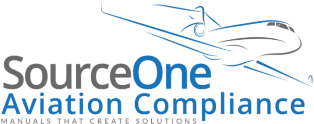Advisory Circular (AC) 91-67A, “Minimum Equipment Requirements for General Aviation Operations Under 14 CFR Parts 91, 133, 137 and 141” to describe acceptable methods for operating aircraft with certain inoperative instruments and equipment, and in part to ensure international standardization. Essentially, the AC revises FAA policies for the approval and use of minimum equipment lists (MELs) and would subject Part 91 MELs to an ongoing approval process. The process proposed in the AC would require review of each operator’s MEL upon initial issuance of the LOA and again upon each revision of the MMEL. NBAA submitted comments to the FAA, outlining a number of concerns with the draft AC that focused on compliance with international standards; clarity and simplification; a data driven and scalable solution. Since 2017, Safety Assessment of Foreign Aircraft inspections in Europe have resulted in safety findings for U.S. Part 91 operators due to differences in the FAA MEL process. U.S. Part 91 operators may request FAA authorization to use a master minimum equipment list (MMEL) in order to defer repairs of and consequently fly with certain inoperative equipment, in accordance with §91.213. Use of the MMEL is demonstrated through letter of authorization D095.However, EASA interprets ICAO Annex 6 Part II, “International General Aviation”, Section 3, “Large and Turbojet Aeroplanes” 3.6.1.1, which speaks to MMELs, differently from the FAA interpretation. EASA requires an MEL to be tailored to the systems and configuration of the individual aircraft, and to address variables including type of operations conducted, operating environment and other factors potentially impacted by inoperative equipment. Therefore, the agency generally doesn’t consider an MMEL to be an appropriate manner of deferring a maintenance discrepancy. Noncompliance can result in safety findings or, in the case of a discrepancy deferred by MMEL instead of an MEL, grounding of the aircraft until the discrepancy is repaired. “NBAA’s primary concern relates to the newly proposed ongoing review process required for Part 91 MELs,” said Brian Koester, NBAA’s director, flight operations and regulations. “The FAA regulates more business aircraft than the rest of the world combined.”
See AC 91-67A, Section 1.9 for more information.
SourceOn Aviation Compliance’s concern is that the FAA may not have enough manpower for the additional tasks due to the fact that FSDOs and IFOs will be inundated with a high number of LOA D195 requests for an Approved CFR Part 91 Serialized MEL for CFR Part 91 Operators. The OEMs would have to assist in providing an actual MEL for their Make and Model that would need to be completed with only minor editing required to reflect the current serial number’s ATA Item inventory to reflect what’s installed as it relates to deferral.
